Touring
Churchill
Churchill has a
permanent population of about 1000 people. There are an estimated 500
polar bears in the Cape Churchill area, so it is roughly one bear for
every two people! The latitude is 58 deg., 47 min. north; it is the
land of the tundra.
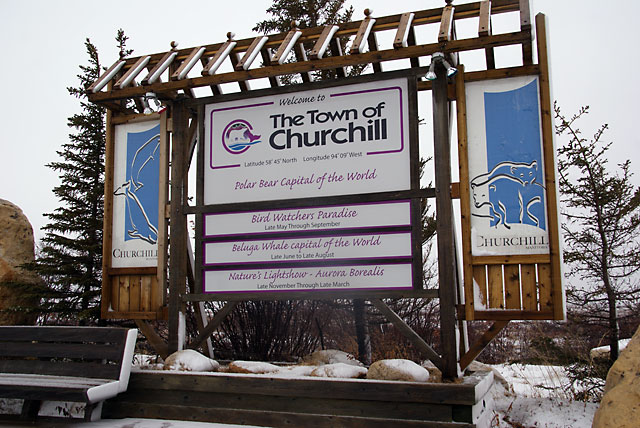
Churchill advertises itself as the Polar Bear and Beluga Whale capital
of the world. The season for polar bear watching is October and
November, while the season for beluga whale watching is July and
August. Polar bears congregate in the area in October and
November, waiting for Hudson Bay to freeze up so they can go out on the
ice to hunt seals. Seals are their favorite food, but while
on land food is scarce; they are very hungry and will eat almost
anything.
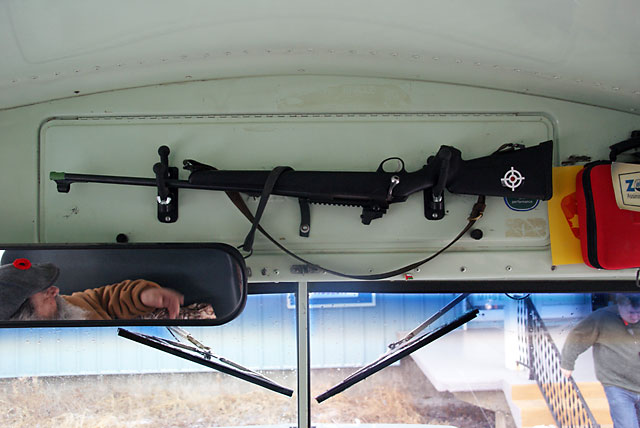
After arriving in Churchill, we boarded an old school bus for a tour of
Churchill. Above the driver was a strong indication that we were in
polar bear country.
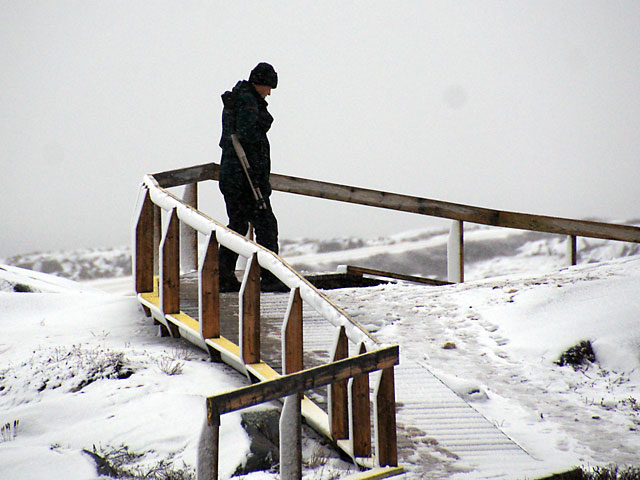
Our first stop on the tour was Cape Merry National Historic Site, which
was the location of a fur trading post established in 1717. One Parks
Canada ranger led us on a tour of the ruins, while another ranger armed
with a rifle stood guard nearby.
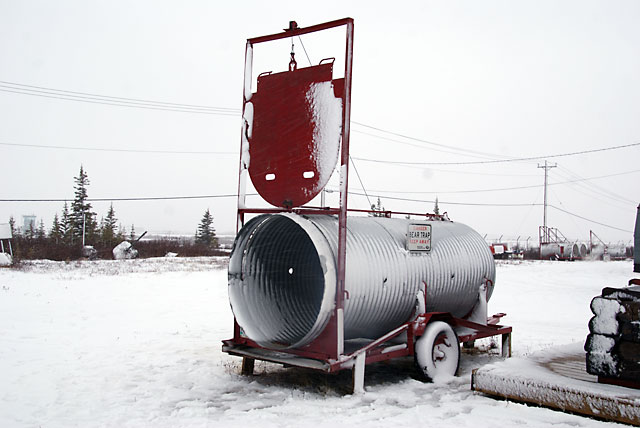
The town of Churchill operates a Polar Bear Alert, which chases bears
out of town, and uses traps to catch problem bears.
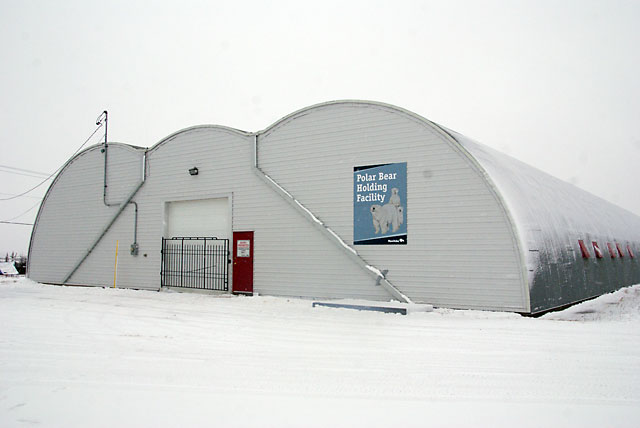
The polar bear holding facility (also known as the "polar bear jail")
in Churchill. Problem bears are put in
this jail. They are released when Hudson Bay freezes, or are
airlifted to a remote location if they have been in the jail 30 days.
The jail has a capacity of 38 bears. To reduce stress, the bears cannot
see each other, or humans. They are given water and snow, but no
food. The jail has a capacity of 38 bears; there were 13 bears in the jail while we were there.
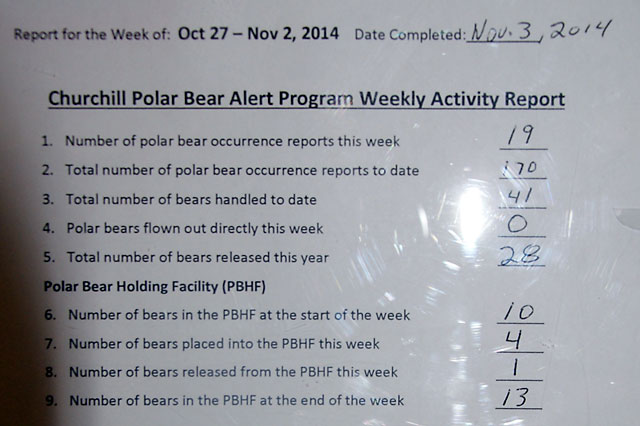
The polar bear activity report for the week prior to our being there.
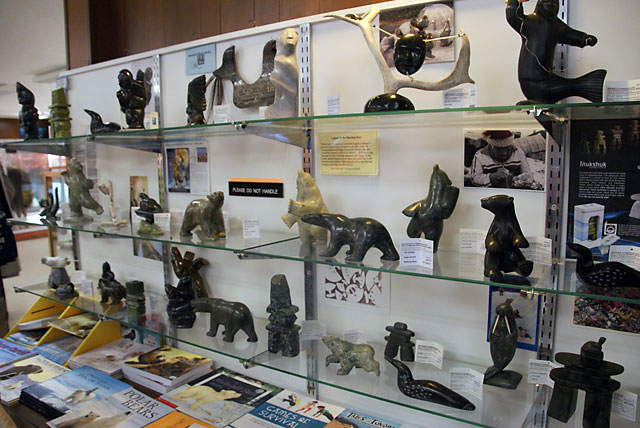
The Eskimo Museum in Churchill has a lot of beautiful (but
expensive) artwork done by Inuit, which is the preferred term for
the indigenous people in the artic.
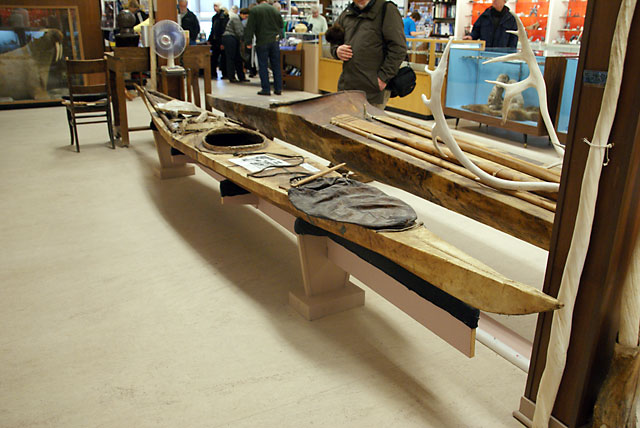
A couple of old Inuit kayaks in the Eskimo Museum.
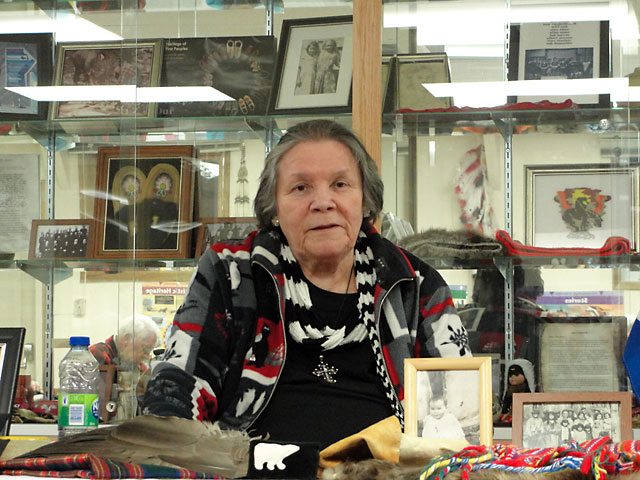
Myrtle deMeulles, a storyteller of mixed Cree - Scottish heritage ,
talked to us about growing up in a Metis family in northern Manitoba.
Myrtle is a recipient of the Order of Manitobe, which is Manitoba's
highest honor.
Watching Polar Bears








